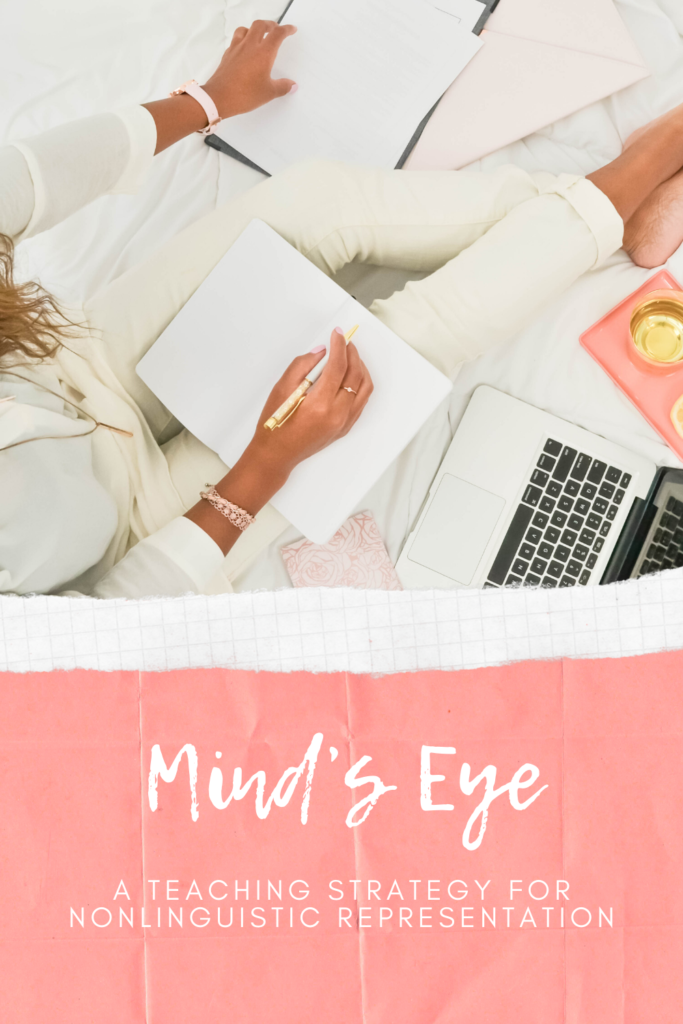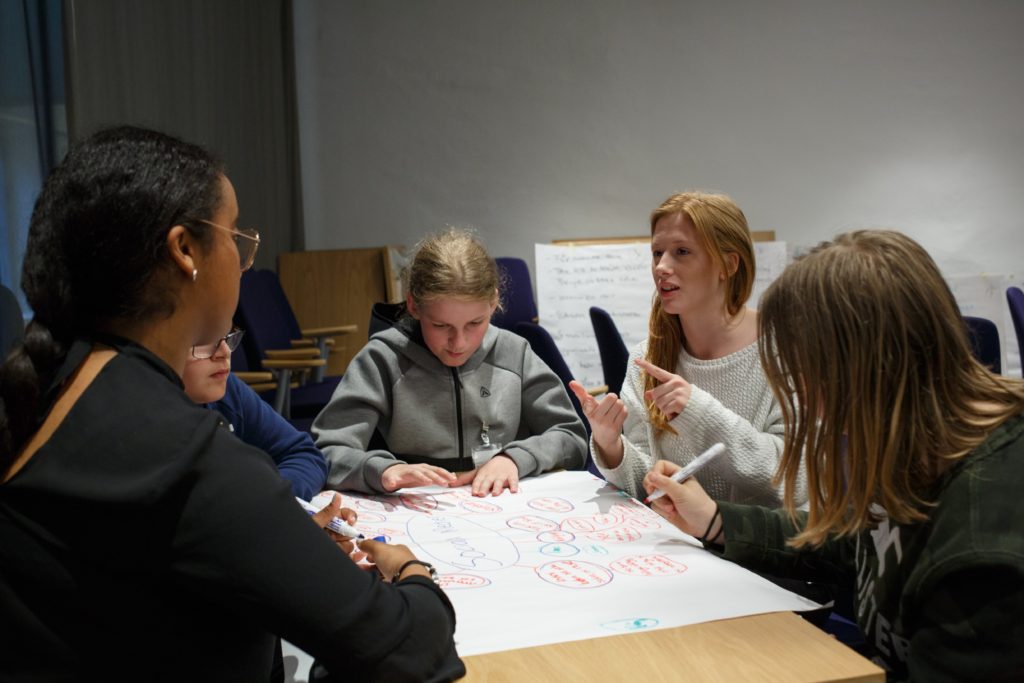
I have to tell you thank you for visiting my website. I live in Ohio, and our last day of school was Friday, March 13. At first, I thought this quarantine was temporary and would end soon. Then I went through the grieving stages and did not feel like myself. It was online teaching and helping my daughter that made me get out of bed and start my day. Within weeks of online teaching, I became overwhelmed with internet connection problems and not teaching in front of a class. How do I do it? In the early morning, I have a conference call, and then my daughter jumps on the bed to get me ready to make breakfast and get started on my day. How are you doing during this time?
Before the quarantine, I was incorporating all kinds of strategies to increase comprehension and make teaching engaging for my students. One of my favorite strategies is the “Mind’s Eye” from the book Tools for Classroom Instruction that Works by Harvey F. Silver, Cheryl Abla, Abigail L. Boutz, Matthew J. Perini. This book is great, check here to read about another strategy I used from the book. I used “Mind’s Eye” with my reading lab and career exploration classes. This strategy is used prior to reading a text as a preview of a story or nonfiction text. When I used this strategy, I noticed that students were able to make predictions, learn new vocabulary words, and preview the central theme. Students were excited and engaged in learning about the text.
How I presented “Mind’s Eye” to my reading lab class
- I handed each student that was in the small group the “Mind’s Eye” worksheet. The worksheet has four squares. Each square is labeled: a) Picture b) Feelings or Personal Connection c) Questions and d) Prediction.
- I read a list of words from the nonfiction text and students had to write the words on the margin of the page. Words such as basketball, parents, teammates, arguing, crying, and family were mentioned within the text.
- I asked the students, what do these words mean? I read the title “A Full House: A Teenager Thinks About the Impact of Divorce.” How do these words connect to the text? Students gave their predictions, and I acknowledged their answers but did not say they were right or wrong.
- Students had five minutes to write within each box. I had the students write one prediction in the prediction box before moving on to reading the text.
- We discussed what was written, and then I passed out the text. Students were given seven minutes to read the text by themselves.
- After the seven minutes, students were given another five minutes to write down their answers in each box.
- Students were instructed to talk to their elbow partners about their answers. During this time, I heard students say they knew the text was about a basketball player’s parents going through a divorce. Some predictions were wrong because the parents did not get a divorce, but it helped their prediction and ignited a curiosity to read the text.
- We discussed this as the whole group, and students took a three-question quiz and were given a writing prompt.

What did I learn?
I learned that students loved this strategy because they were given clues to what they were about to read. I did this same activity for the poem “Miss Rosie” by Lucille Clifton, and it went over really well. I used the words “potato peels,” “pinky toe,” and “brown bag.” Students looked at each other and laughed because they did not know what they were learning. We had a long talk about sensory adjectives, figurative languages, and idioms. Using the “Mind Eye’s” strategy with poetry is highly recommended because of the word usage and sensory details.
This was a great preview, prediction comprehension strategy. This strategy could be used on formative and summative assessments. Students can look at the title and scan the passage to gather a quick prediction. Then they can scaffold the predictions into summaries and a conclusion.

In conclusion
Using this nonlinguistic representation tool, “Mind’s Eye” assisted students with previewing the text and improved comprehension. Students were able to focus on the vocabulary and predict what the text was about through the strategy. I loved using this strategy with poetry because there were more sensory adjectives and phrases that sparked the students’ interest. This strategy can be used within any academic area as a previewing tool before reading an article, interview, or fictional text. Students were engaged and wanted to know what the text was about. This engagement can be used on standardized tests, where students can read the title of a text and scan a passage to make predictions. I would suggest any teacher use this strategy and see their classes come to life and be excited about reading from using the “Mind’s Eye” strategy.
Try this strategy with your class and tell me what you think. Were your students excited to read a passage because of the way the information was given to them? Let me know in the comment session below.




Leave a Reply